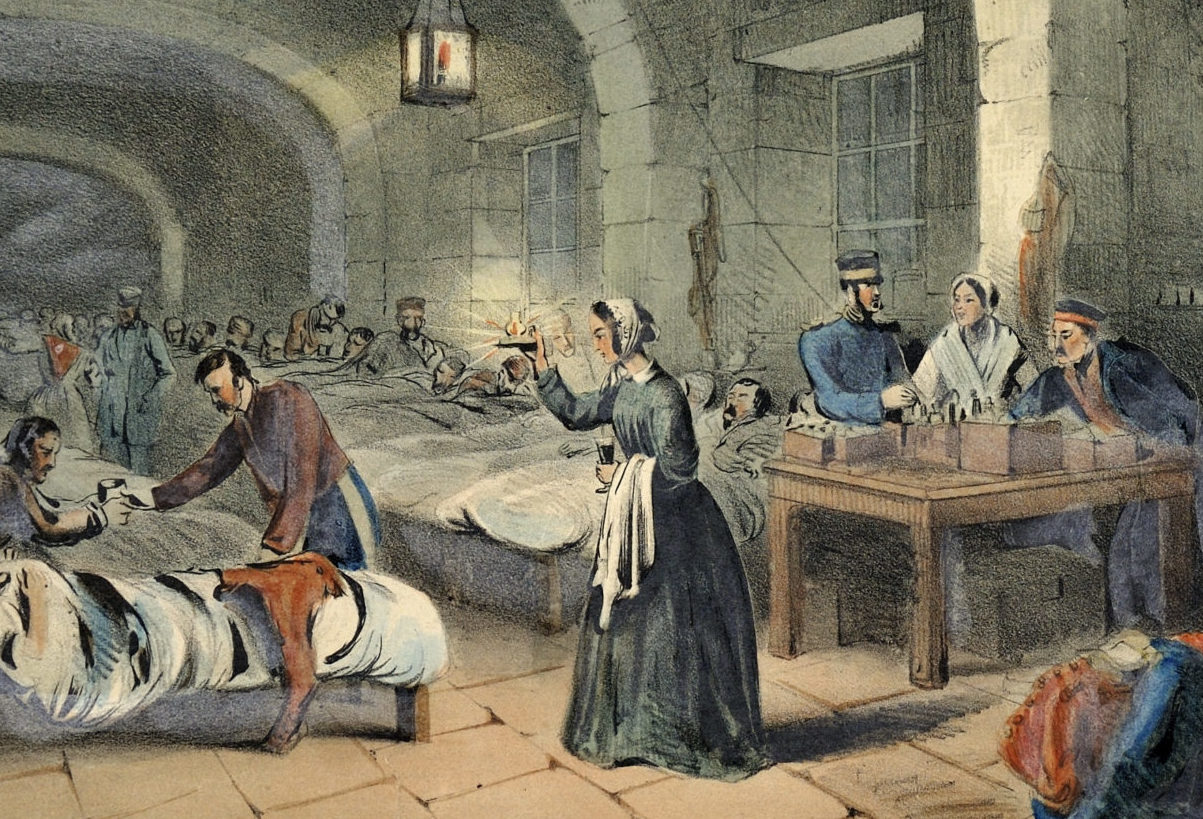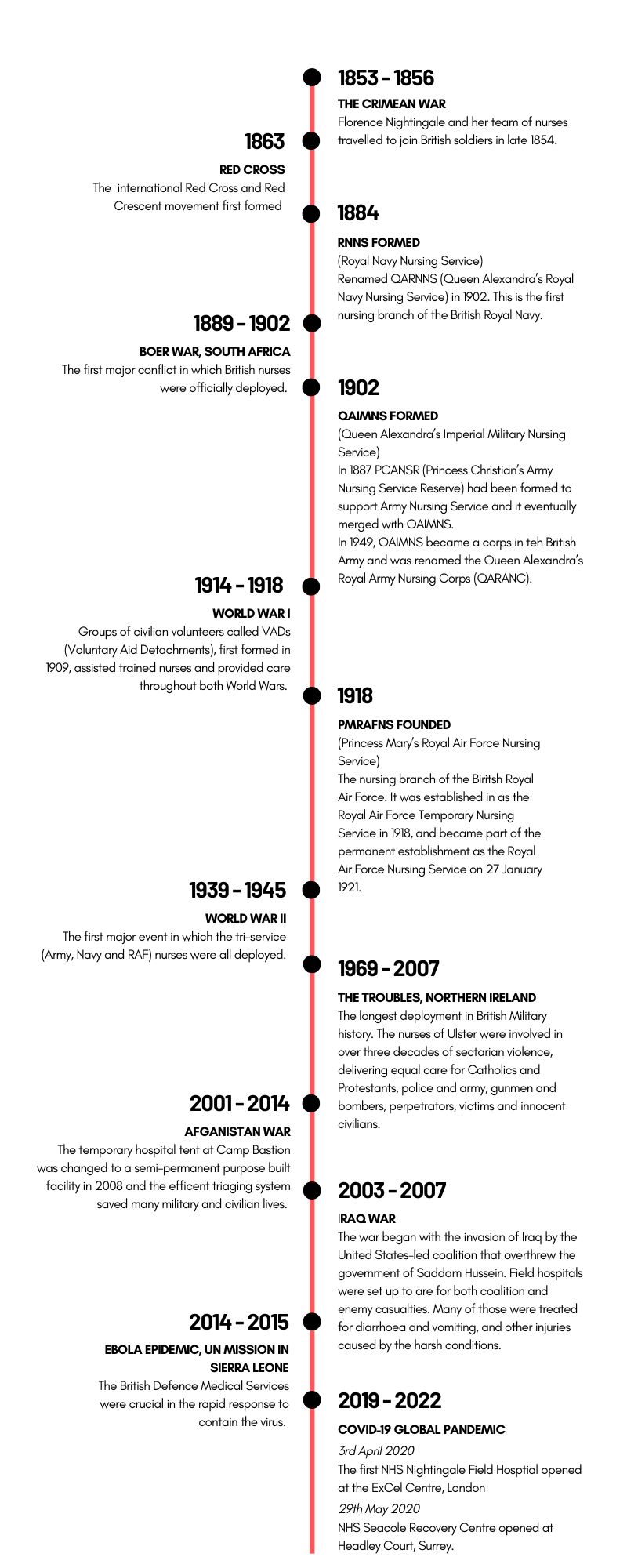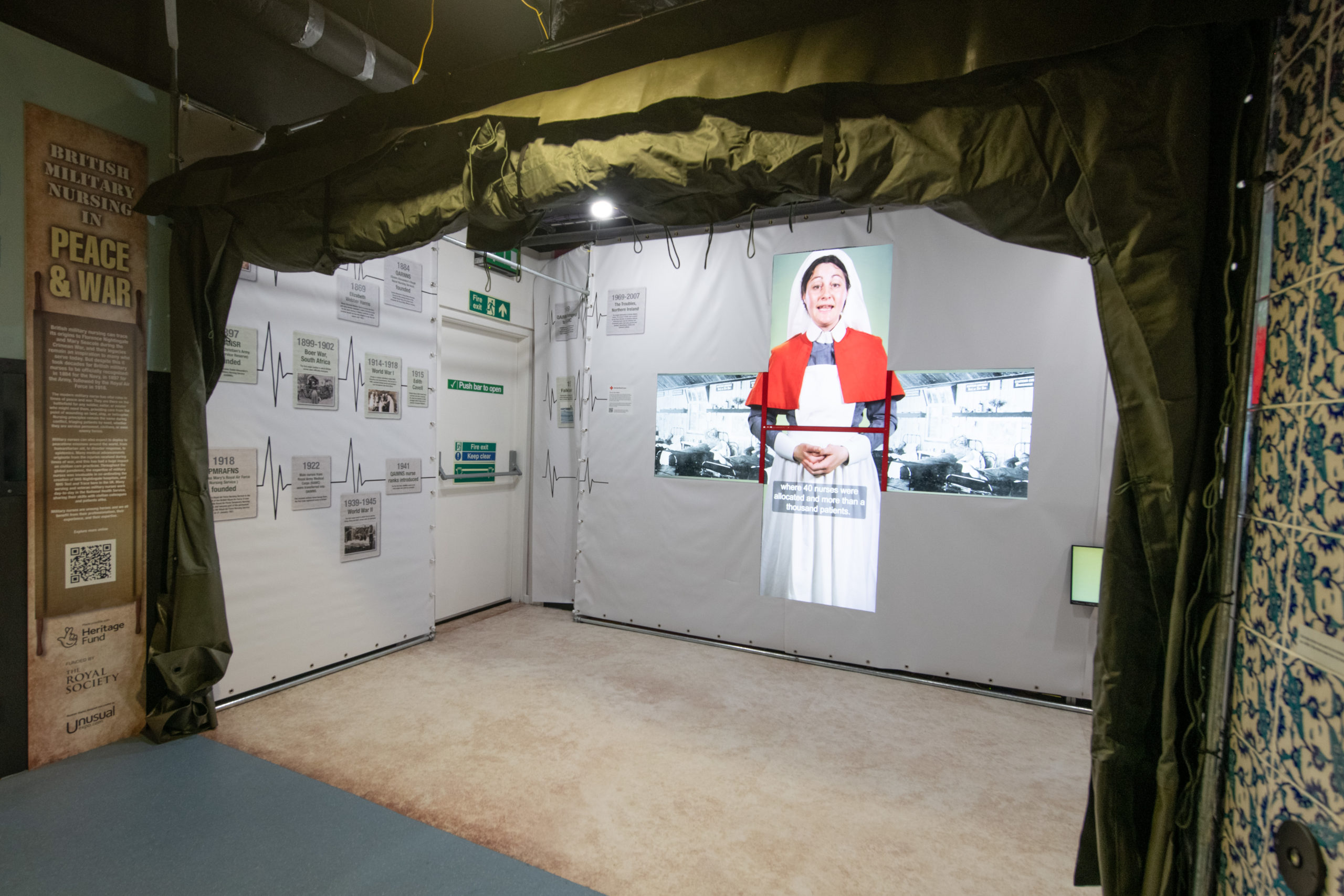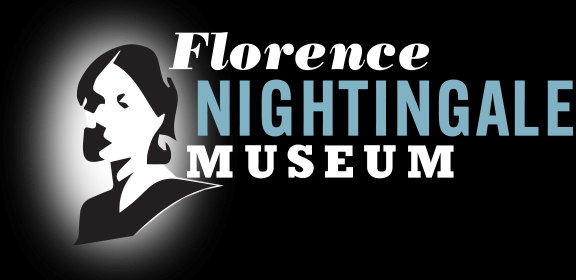British Military Nursing in Peace and War
British military nursing can trace its origins to Florence Nightingale and Mary Seacole during the Crimean War, and their legacies remain an inspiration to many who serve today. Despite this it took decades for British military nurses to be officially recognised: in 1884 for the Navy, in 1897 for the Army, followed by the Royal Air Force in 1918.
The modern military nurse has vital roles in times of peace and war. They are there on the battlefield for any soldier, sailor, or aviator who might need them, providing care from the point of wounding on land, ship, or helicopter. Nursing principles remain the same during conflict, triaging patients by need, whether they are service personnel, civilians, or even enemy forces.
Military nurses can also expect to deploy to peacetime missions around the world, from humanitarian aid, to disaster response, to epidemics. Many medical advancements originate from the injuries received during times of war, and this has had a huge impact on civilian care practices. Throughout the COVID-19 global pandemic, the expertise of military nurses was invaluable in co-ordinating the creation of NHS Nightingale hospitals, and NHS Test and Trace here in the UK. Many serving and veteran military nurses work day-to-day in the National Health Service, sharing their skills with civilian colleagues and patients alike.
Here we outline a brief history of British Military Nursing from Nightingale and Seacole through to today. While we highlight a few conflicts within this timeline to show the changes that have occurred, we are aware that there are many others that have also helped with the development of medical care within the Armed Services.

Penelope Gertrude Veysie
Veysie was a British military nurse during the Crimean War. A working-class hospital nurse, originally from Plymtree in Devon, the dedication and clinical experience she provided to naval officers at a small coastal hospital in Therapia (Turkey), would see her placed at the forefront of the Nursing Reform movement…
May (Mary) Chavasse
Born in Oxford in 1866, Mary Chavasse, known as May, was the youngest of seven children. Five of them would go on to serve in the First World War. She was deployed in both the First and Second World Wars, during a time in which important developments in the care of the sick and wounded within the military workforce were taking place…


Mary Seacole
British-Jamaican doctress Mary Seacole travelled halfway across the world to care for British troops in Crimea, establishing her famous 'British Hotel' close to the front lines.
Florence Nightingale Shore
Second cousin and goddaughter to Florence Nightingale, Miss Shore served as a military nurse in both the Boer War and First World War. Her prolific experience as a civilian nurse meant she was in the right place at the right time, where rapid advances in medicine, medical facilities, and the nursing profession, created a demand for highly skilled and experienced veteran nurses. Florence Nightingale Shore would therefore find herself on frontline of army nursing developing within its own right – although her life would encounter an untimely tragedy...

Hear personal stories of military nurses over on our YouTube channel (please note that this content is not included in the creative commons licence).
Content on this page is licensed under CC BY-NC-SA 4.0

